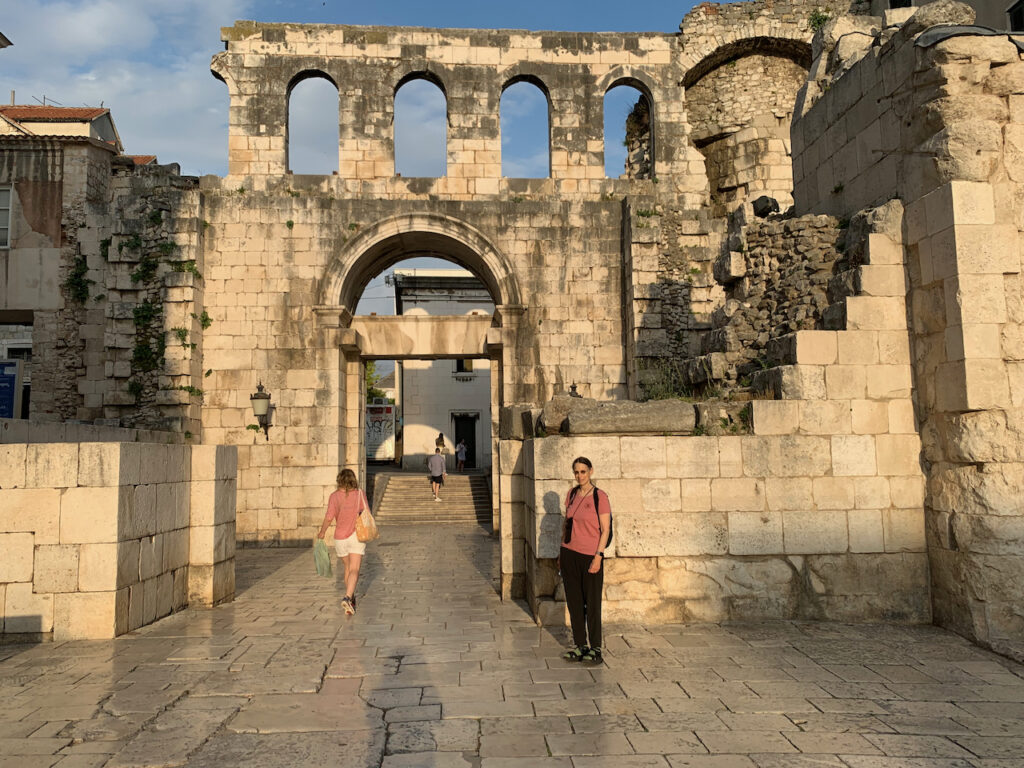
The city of Split has long been at a critical crossroads of world history with access across the Adriatic from Italy, Our wonderful Hotel Fermai, a restored mansion, is just a few short blocks from the main entrance into the old city. Soon after our arrival, Jack and I take a walk in the warm late afternoon when the sun’s glow reflects on the old stone walls. We enter by chance through the main gate and soon find ourselves in a remarkable and unexpected setting, surrounded by a classic colonnade from 1700 years ago, about 300 AD.
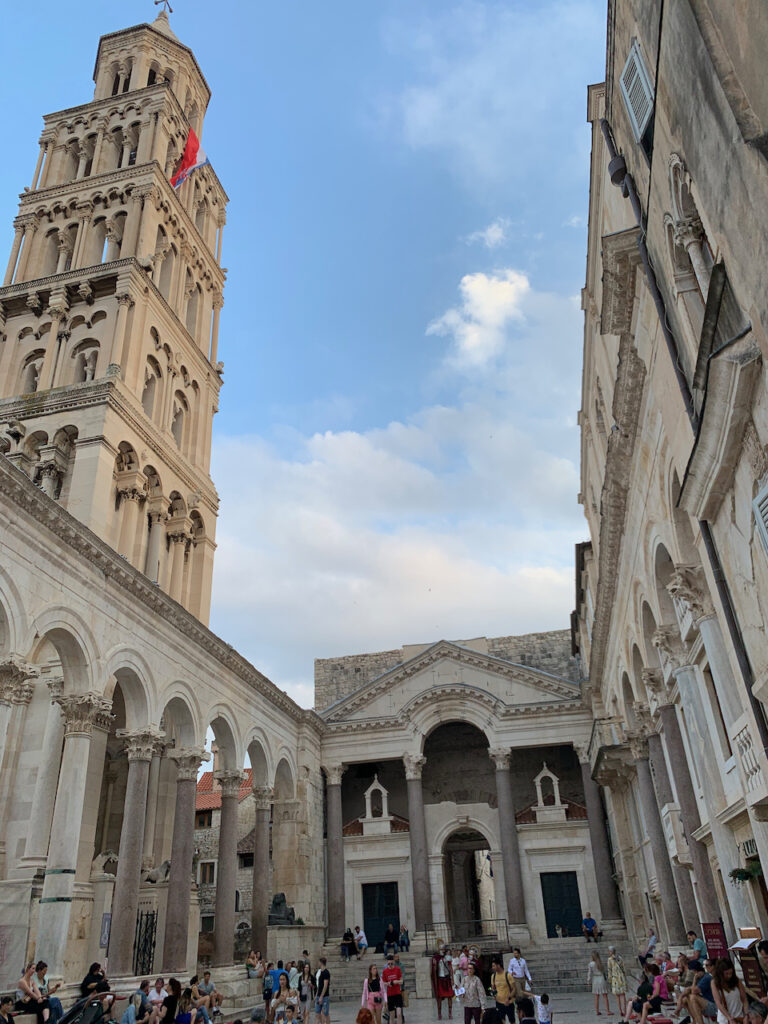
We are at the Roman remains of the Palace of Diocletian, the last Roman emperor to try to stop the spread of Christianity which was weakening Rome’s power. His failure eventually led to a line of major churches in this City. the present one built on earlier ruins with yet another magnificent bell tower.

Jack and I wander around the outside ruins of the palace, deserted at this time of day, and are surprised to find significant amounts of graffiti spray painted on boards used to protect certain old structure and the glass doors of a closed museum. From the fact that the original and reconstructed stone work is not defaced, we take it that the penalties are severe for damaging historic property but the local youth feel emboldened here, as elsewhere around the city, to leave their mark on recent construction. Our guide the next day tried to explain it as some respect for their heritage but I imagine it is fear of repercussion that marks the distinction.
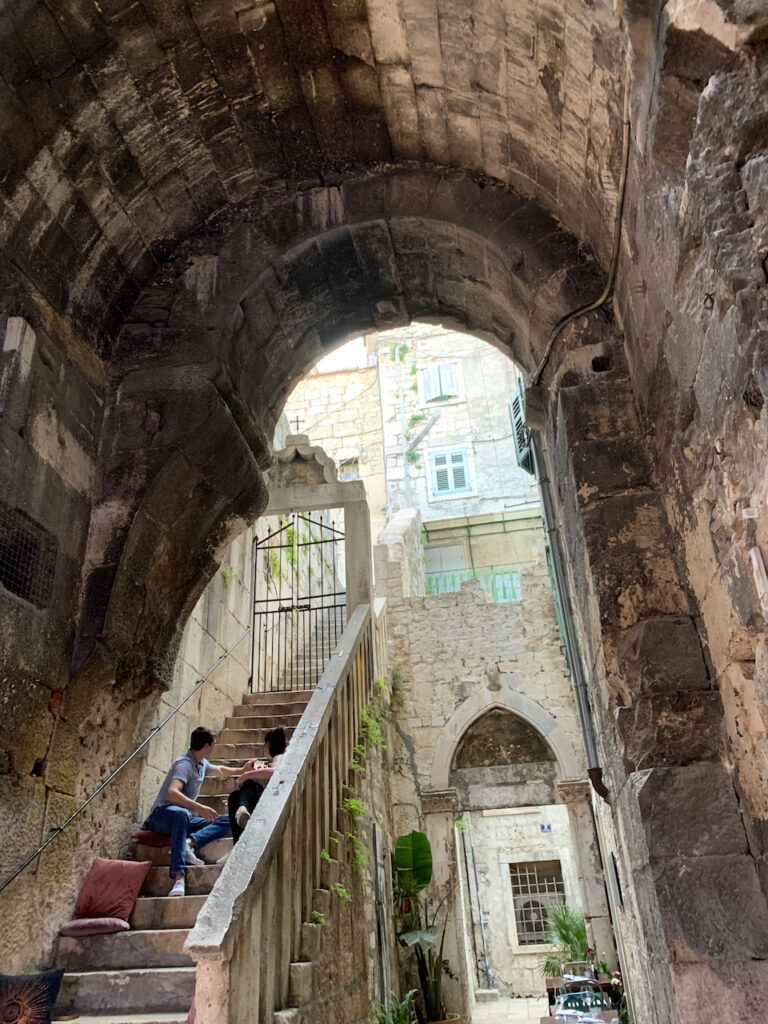
Our guide, Luka, enthusiastic about history, took us back to the same area the next morning and explained in detail what we had viscerally appreciated without words – but now it was crowded with tour groups. The old city is trying to balance the desire to excavate the roman ruins and the need for local people to have a place to live and keep the city alive.


The Peristyle, once the gathering place of those entering the palace grounds, remains a place for visitors to sit and talk, where we saw a bride and groom, leaving the great church after their wedding. Nearby is the Temple of Jupiter, originally a place for Roman worship and later in history for baptisms. John the Baptist now guards the small temple in the form of a more modern sculpture by a Croatian artist.

From the peristyle, we walk a few steps up, into the Vestibule of the palace which is a large domed vault with arched windows, now open to the sky, where the acoustics invites itinerant musicians and singers. The palace itself is just the idea of the rooms as politics and earthquakes have obliterated the actual structure.

Split once had a small Jewish community of about 300 people. Few are left. We visit the synagogue, maintained privately now by a few people with donations, and hear of how when the Italian army marched through Croatia as part of Croatia’s initial connection with the Axis powers, Jews were rounded up and sent to work camps, included our temple guide’s parents. Most of them survived the war. But when the Germans came through a little later, their Croat comrades sent all the remaining Jews of the area to Auschwitz. Here is the plaque in their honor.
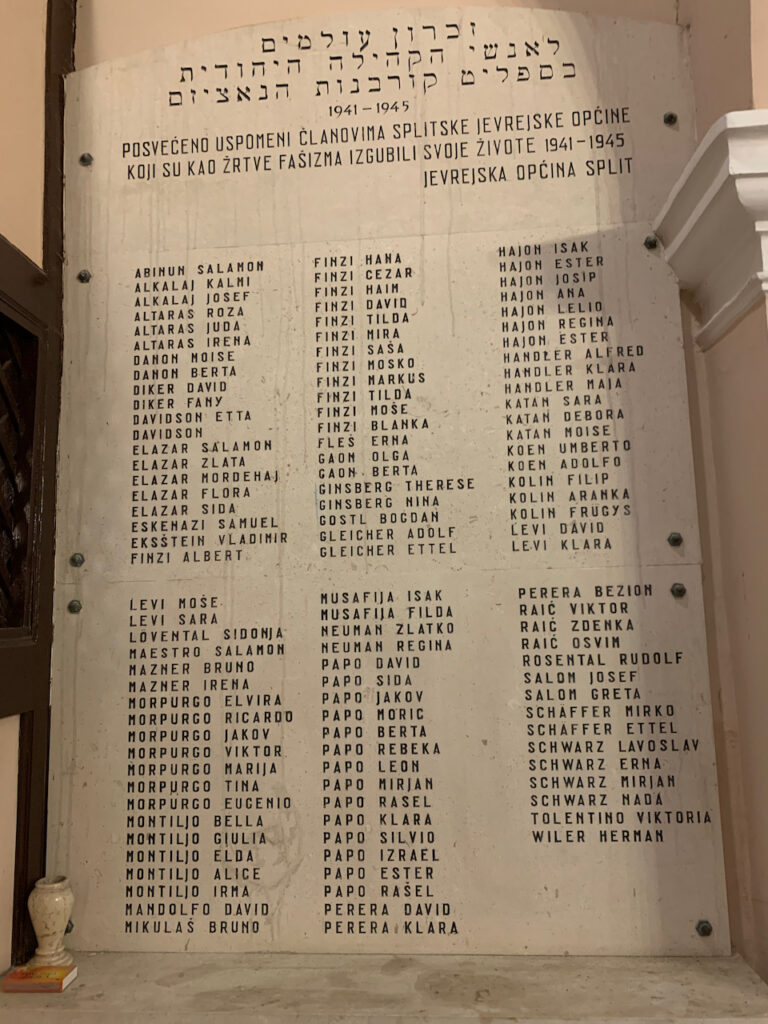
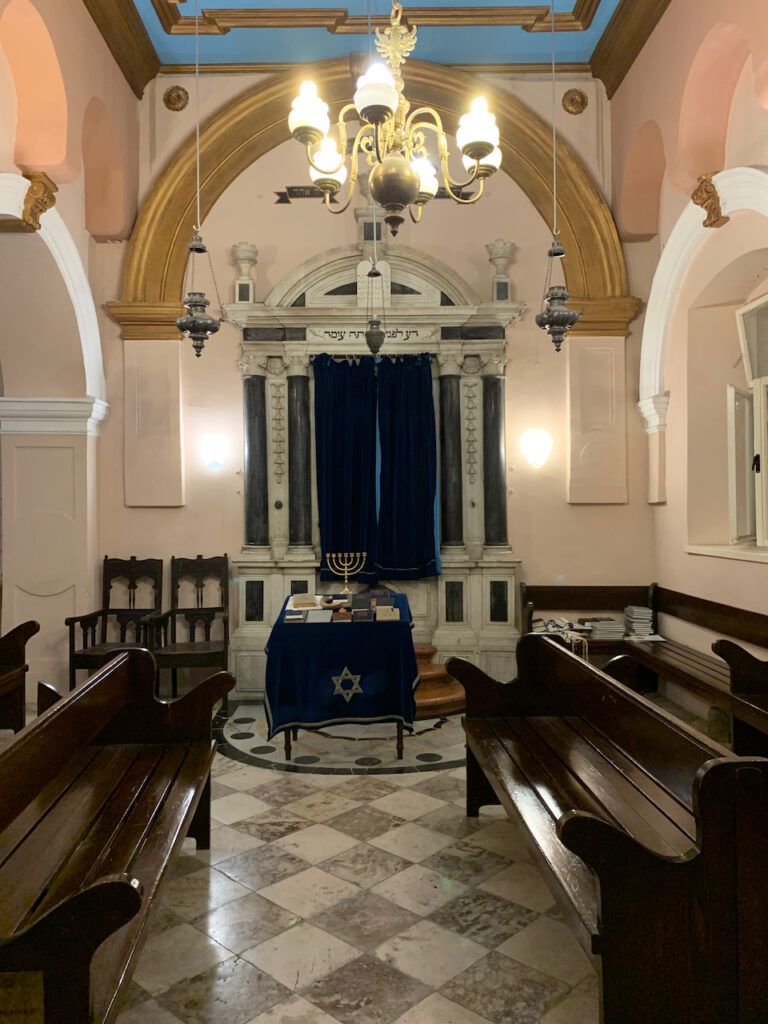
This is really a part of the world which has suffered greatly through both external and internal bloodshed over the centuries. The strong antagonism between the Croats and Serbs, both Catholic but one Roman Catholic and one Orthodox, remains inexplicable including to people who live here.
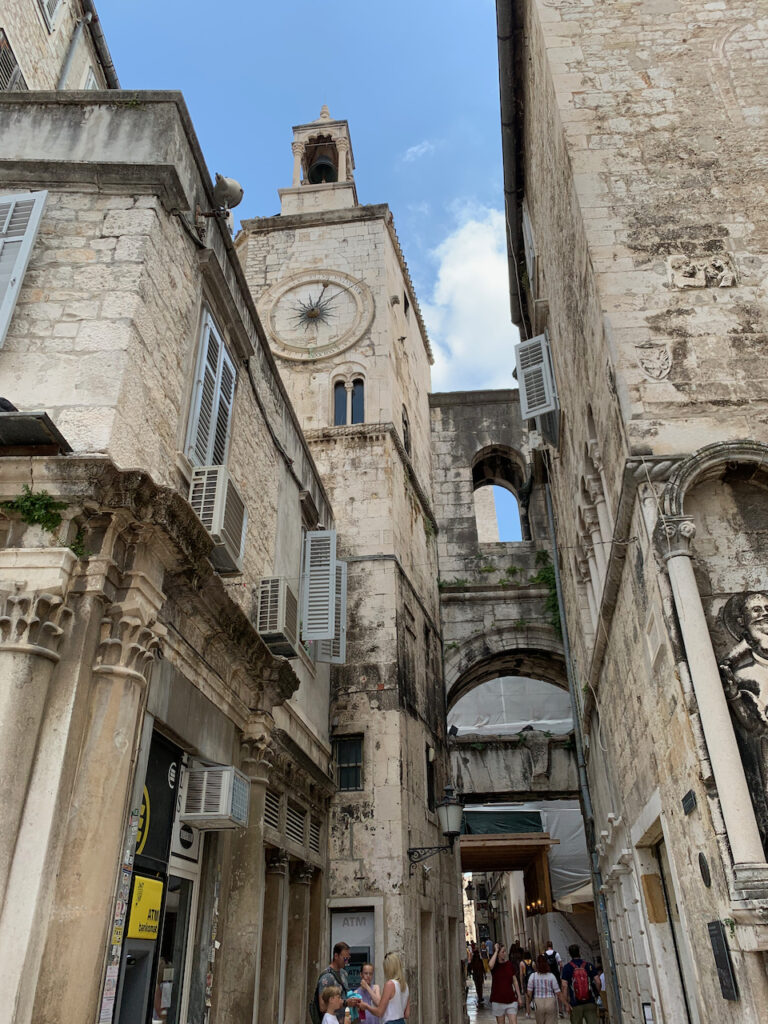

Melanie returns to the hotel while Jack and I walk on and discover to our surprise the excavated basements of the palace, now a well-curated museum. Large arched cavernous spaces, used over the many centuries from storing weapons to making olive oil to living space for homeless. It was filled with dirt and debris over the years and more underground warrens are still being cleared for exhibit. We indulge in yet more gelato (I am happily trying out all the vegan options that this part of the world produces) as we sit by the waterfront, relax in the warm sun and wait for our sunset cruise.

On the cruise, filled with mainly European tourists, we slip into deeper water and watch the shoreline change with pockets of small old towns in each protected niche of the coast, as the sun sets and sky changes into night. We found out earlier in the day that today is a holiday, Croatian independence day, so right after docking we are shocked for a second by explosions with the stories of the many wars still on our minds but then wonderfully surprised when we hear explosions and are met with a tremendous display of fireworks right next to us above the water.
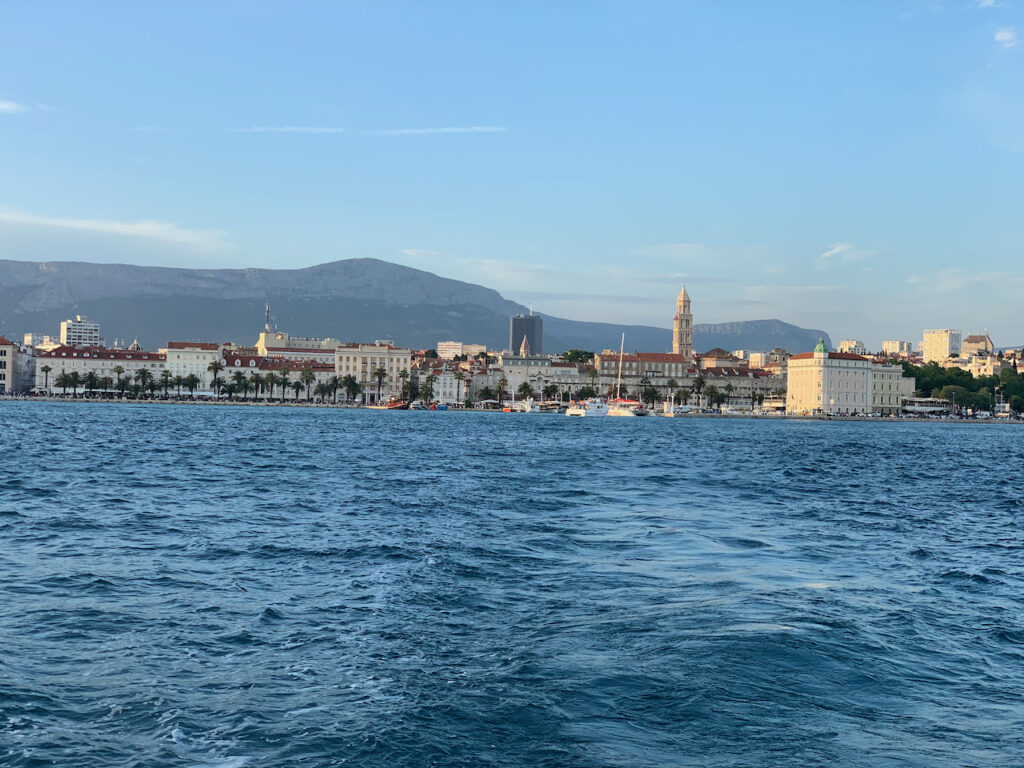
On the way back to the hotel, we stop and have dinner at a wonderful vegetarian and vegan restaurant, with a younger crowd of diners. As elsewhere, no one wears masks in this city.
I am trying to keep my eyes open to finish this but must concede to sleep.
